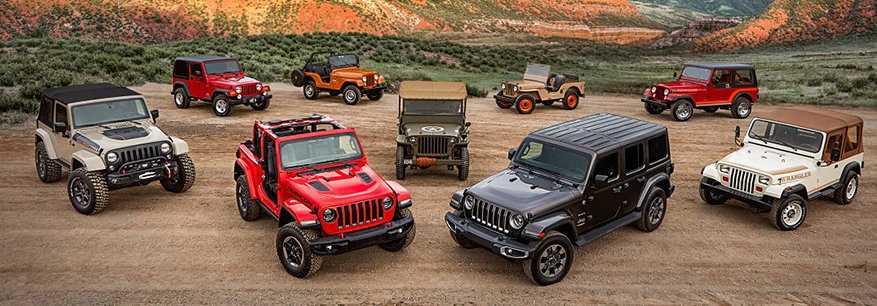by Luke Walsh
Torque Correspondent
No vehicle is more emblematic of American patriotism and values than Jeep. From its humble origins as a utilitarian military vehicle – the name Jeep is thought to possibly derive from ‘GP’, an acronym for ‘general purpose’ – to its modern incarnation as both a rock-crawling and grocery-getting SUV, the Jeep deserves a place of honor next to apple pie and baseball. But not everyone knows the full history of Jeep, or exactly how to spot the difference between a Willys, CJ and Wrangler.
Fighting for Freedom
Although the modern Jeep brand represents freedom to roam, the off-roader was actually born during a time when freedom was threatened. By June of 1940, Germany’s assault on Western Europe and Italy’s rise as an Axis power meant that U.S. involvement in World War II was imminent. In preparation, the Army contacted 135 auto manufacturers with a request to develop a combat-ready quarter-ton reconnaissance vehicle to replace sidecar-equipped motorcycles that had been used in earlier war efforts.
The request came with a laundry list of requirements, such as a minimum payload of 660 pounds, an engine output of at least 50 horsepower and 85 lb-ft of torque, three seats, a fold-up windshield and, of course, four-wheel drive. Given the work these vehicles would be doing, additional requirements included a cooling system capable of prolonged low-speed travel, a ground clearance of at least 6.25 inches, an 80-inch wheelbase and a tire tread width of 47 inches.
The demanding list of requirements became even more daunting when paired with the Army’s tight timeline—a design would have to be submitted in a mere 49 days.
Of the original 135 manufactures, only three responded: American Bantam, Willys-Overland and Ford. Bantam, having enlisted the skills of freelance designer Karl Probst, was the first to deliver a test mule on September 23, 1940. This ‘pilot model’ proved incredibly capable, but the Army was seriously concerned about Bantam’s ability to produce the 4x4 given its recent bankruptcy and limited manufacturing capability. When Probst approached the Army directly and offered his services for free, the feds instead gave Bantam’s design to rival Willys and Ford, claiming the government had ownership. Each marque built, and then delivered, improved prototypes of the Bantam design on November 11.
The Willys Quad, powered by an L134 ‘Go Devil’ engine, produced 60 hp and 105 lb-ft of torque. Meanwhile, Ford’s Pygmy barely produced the minimum 85 lb-ft of torque. The Pygmy’s power disadvantage lost Ford the contract, but the Army needed as many Jeeps as possible for the war effort, so Ford was invited to co-manufacture alongside Willys-Overland. Thus, Ford ended up producing just over half of the total 700,000 units made. American Bantam ended up bullied out of the process entirely, and with no money to take legal action, it could do nothing. Bantam’s consolation prize was manufacturing 74,000 T3 trailers for the Jeep.
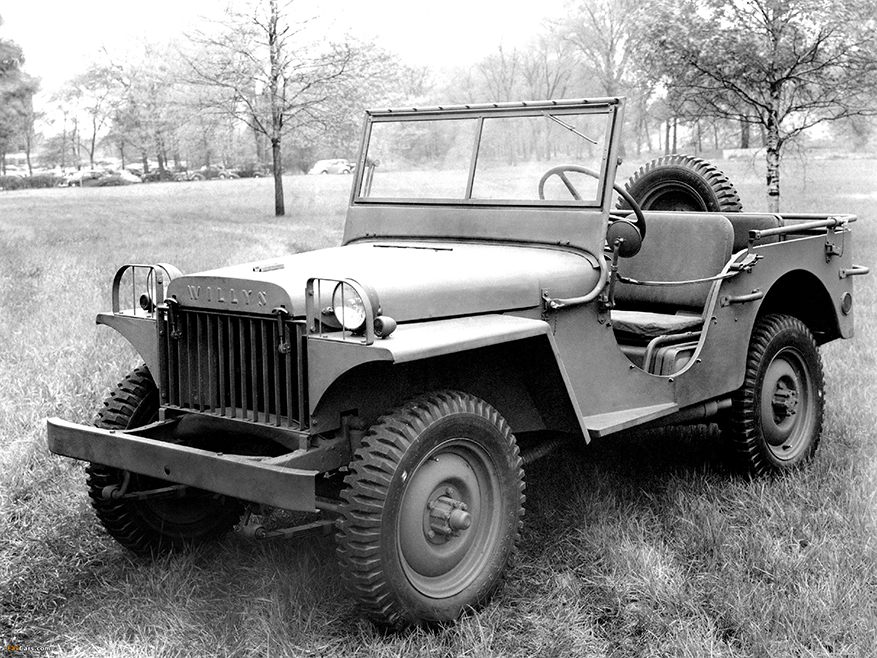
Early production models were known as the Willys MA, and featured improvements over the Quad such as a handbrake and an instrument cluster. A weight savings of 240 pounds was afforded by thinner panels and shortened bolts. Under the Lend-Lease program, the majority of MAs were sent abroad to the Allied forces in Russia and Britain. Today, there appears to be only about 30 surviving MAs of some 1,500 produced.
Shortly following the MA came the most common early Jeep, the Willys MB. Tougher than the MA, the MB could be outfitted with numerous accessories, ranging from machine guns to wheels that allowed for railway travel. The MB quickly proved itself to be one of the greatest innovations of modern warfare, and one was even awarded a Purple Heart. However, despite all that battlefield success, Willys soon found itself with a wartime product but no wartime buyers following the end of World War 2 in late 1945. The company’s answer to its dilemma was construction of a civilian jeep, dubbed the CJ, to display American ‘can do’ spirit at home just as the MB had displayed on the frontline.
Spotter’s Guide: From CJ to JL
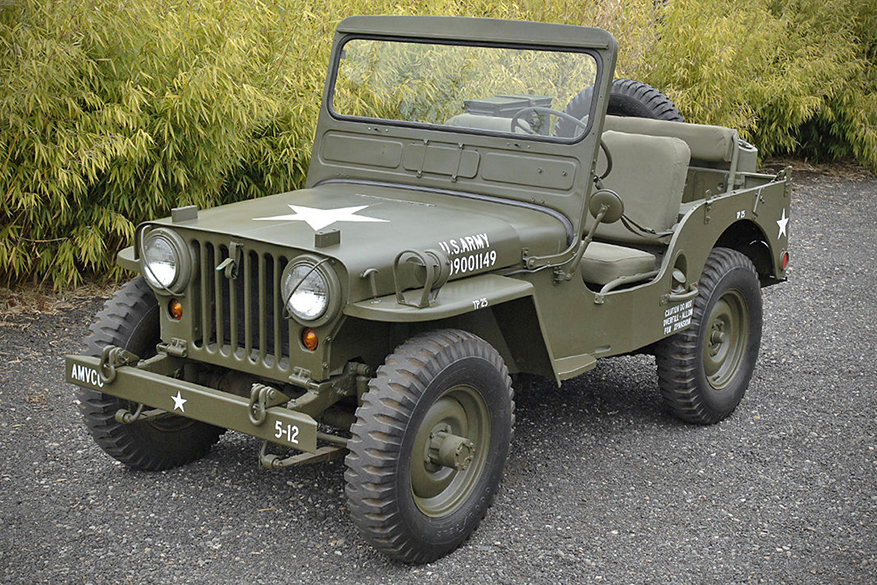
The CJ-series was released in 1945 and marketed by Willys-Overland as ‘The All-Around Farm Work-Horse.’ In fact, it could do the work of two heavy draft horses, moving at a consistent four miles per hour for up to 10 hours without overheating. To make it more user friendly, the CJ-2A received a side-mounted spare tire, seven-inch headlights, an external fuel cap and an opening tailgate.
The most important change, however, was the introduction of the now-iconic seven-slot grille – the most obvious design departure from its nine-slot MB predecessor. The interior was also plusher than the MB, but luxury items like carpet were still off the menu. In 1948, Willys released the updated CJ-3A with refinements such as dual wipers, an updated transmission and a single pane windshield, with the latter being the easiest way to differentiate it from a CJ-2A.
In 1950, Jeep became a registered trademark of Willys-Overland, but just three years later the company was sold to Henry J. Kaiser. Under the name Willys Motors Inc., an updated CJ-3B was rolled out as the first Jeep-branded vehicle, which included the introduction of the new F-Head Hurricane engine. Taller than the previous Go Devil, the Hurricane necessitated a longer grille and a taller hood. This subtle function-over-form design change is the only noteworthy aesthetic difference between the CJ-3A and CJ-3B, so have your ruler handy if you see one in the wild.
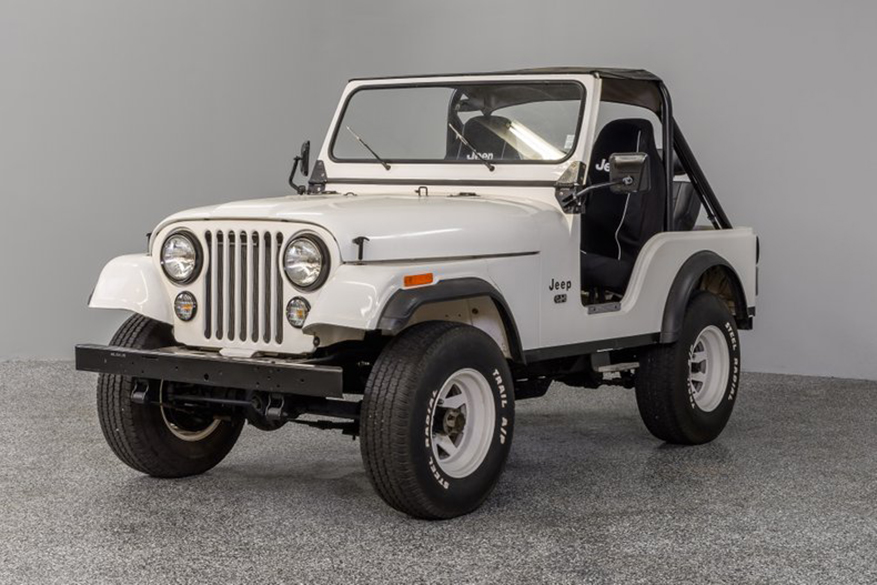
Willys then introduced the CJ-5 in 1955, which marked the end of ‘flat fender’ Jeep styling. The new smoothed-over design was a sharp departure from earlier vehicles, and the rounded fenders are the most obvious CJ-5 giveaway. In addition to the somewhat streamlined looks, the CJ-5 received a host of drivetrain upgrades as well as a one-inch wheelbase stretch.
The CJ-6, a long-wheelbase variant of the CJ that debuted alongside the CJ-5, saw a less modest 20 extra inches between the axles. The CJ-6 saw increased cargo space and improved rear seat comfort, making it a far more family friendly variant of the normal 4x4 Jeep. To better handle those extra pounds and length, the CJ-6 was equipped with heavy-duty axles, bigger brakes and a wider track. Beginning in 1965, the CJ-5 and CJ-6 could be optioned with AMC’s new 155-hp ‘Dauntless’ V-6, which doubled the horsepower of the standard four-banger.
Willys remained the name of Jeep’s parent company until 1963, when Kaiser dropped that moniker and replaced with the Kaiser Jeep International Corporation. That stayed in place until 1970, when Kaiser sold out to the American Motors Corporation.
AMC took over Jeep with big plans for the future. The first V-8 Jeep was introduced in 1973, offered with either a 304- or 360-cubic-inch AMC powerplant. The larger V-8s required the hood and fenders of the CJ to be widened by five inches, which is the easiest way to spot a 1973-75 Jeep.
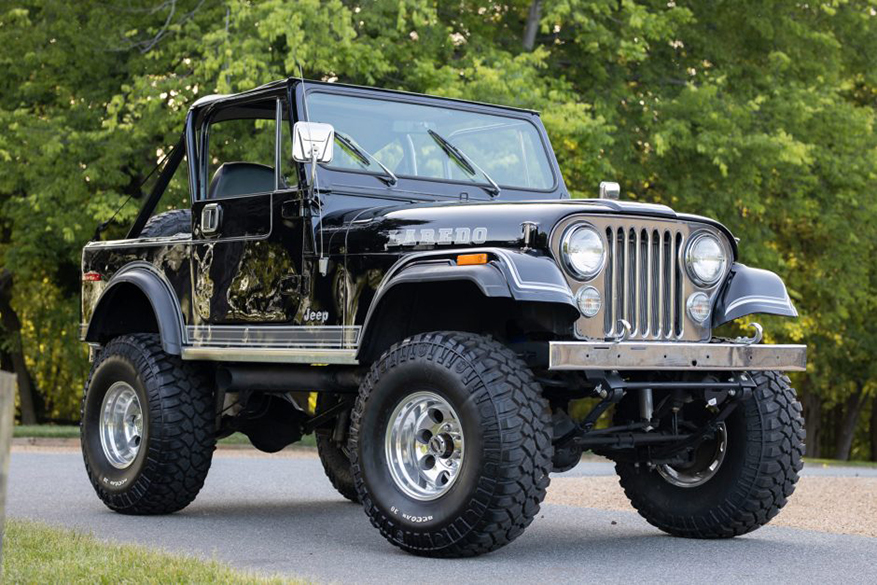
In 1976, AMC introduced the CJ-7, and notable differences included a two-inch increase in wheelbase to account for an automatic transmission, as well an optional molded plastic top and more squared-off door openings. Door shape is the most apparent CJ-7 design change. Eventually, demand for the improved CJ-7 far eclipsed the aging CJ-5, and the latter was discontinued in 1983.
Introduced in 1981, the CJ-8 Scrambler is one of the rarer CJs produced. Although mechanically similar to the CJ-7, the Scrambler truck has a 22-inch-longer wheelbase and an extended rear overhang. These modifications afforded a far greater payload and make Scramblers easy to identify. Scramblers also lacked V-8 propulsion; all made do with either a four- or six-cylinder engine. The Scrambler’s rarity and lack of appreciation in its own time has made it one of the more desirable CJs today, reflected in the premium demand for clean Radwood-ready examples. With one of the shorter CJ lifespans, the Scrambler officially ended production in 1985, followed by the CJ-7 in 1986.
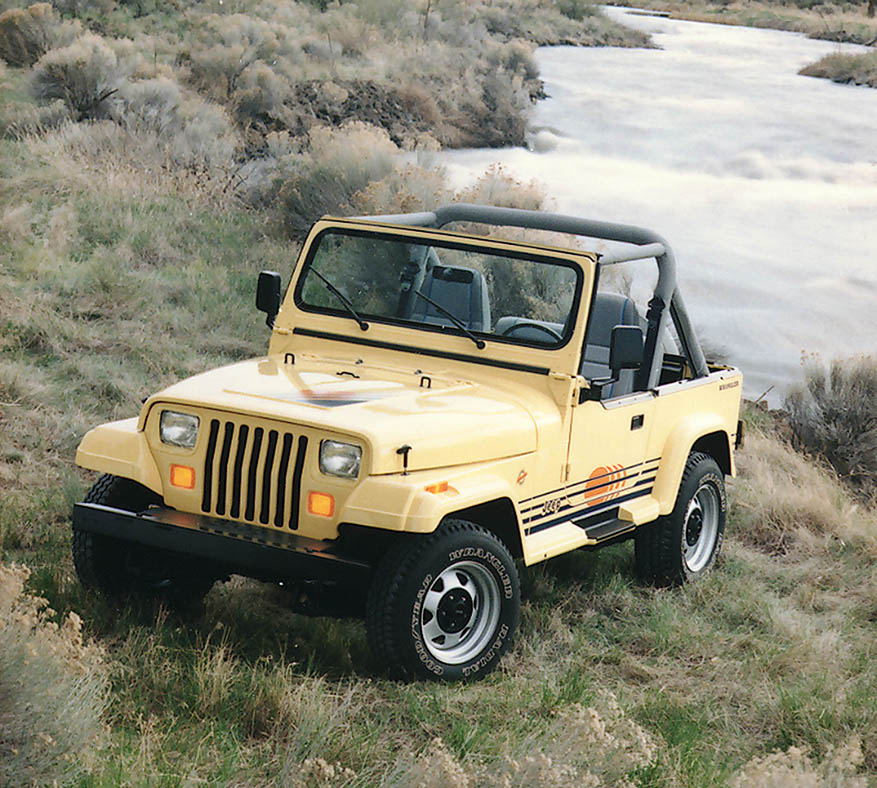
After a 40-year run with multiple generations, the venerable CJ passed the baton to its successor, the oh-so ’80s YJ. Widely considered to be the most notable departure from conventional Jeep styling, the YJ debuted in 1987 under the Wrangler nameplate. Although familiar design cues abound, rectangular lighting, a slanted grille and a modernized interior distinguish (somewhat controversially) the YJ from its CJ predecessor. The headlights and turn signals are the easiest YJ giveaway, as the Wrangler was the first, and only, Jeep to wear rectangular units.
Although AMC designed the YJ from the ground up, with a focus on improved on-road manners, the company was sold to the Chrysler Corporation a year after the YJ’s release. The YJ became a product of Chrysler’s short-lived Jeep/Eagle division, and famously appeared in blockbuster films Jurassic Park (1993) and Clueless (1995) before being phased out of production in 1995.
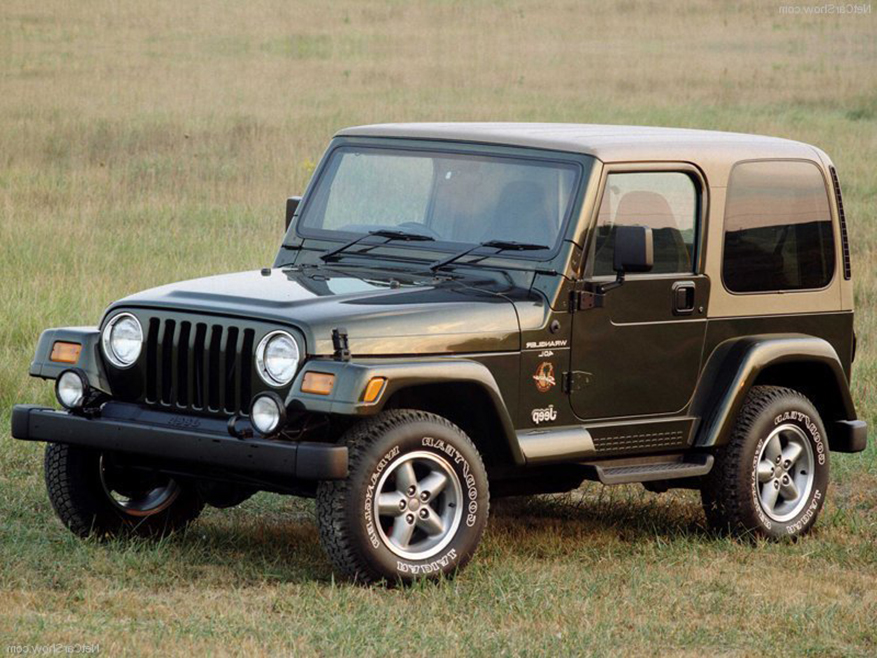
On the heels of the YJ came Chrysler’s Wrangler TJ, introduced in 1997. The TJ was a return to Jeep styling of yore, with round headlights and a more upright grille. Underneath the sheet metal, the TJ was more than 80% new and one of the most comprehensive redesigns in Jeep’s history. While the TJ more closely resembles its CJ brethren, its face differs as headlight openings do not protrude into the first and seventh grille openings. Another TJ identifier is its full coil-spring suspension, which bolstered already impressive off-road capabilities with increased axle articulation and ground clearance, as well as more aggressive approach and departure angles.
The earlier CJ and YJ vehicles both had leaf springs, so a glance inside one of the wheel wells should differentiate a TJ from earlier Jeeps. The TJ also saw the reintroduction of a long-wheelbase model. Called the Unlimited, it offered an additional 13 inches of cargo space. Additionally, in 2005-06, it could be had with the Rubicon off-road package.
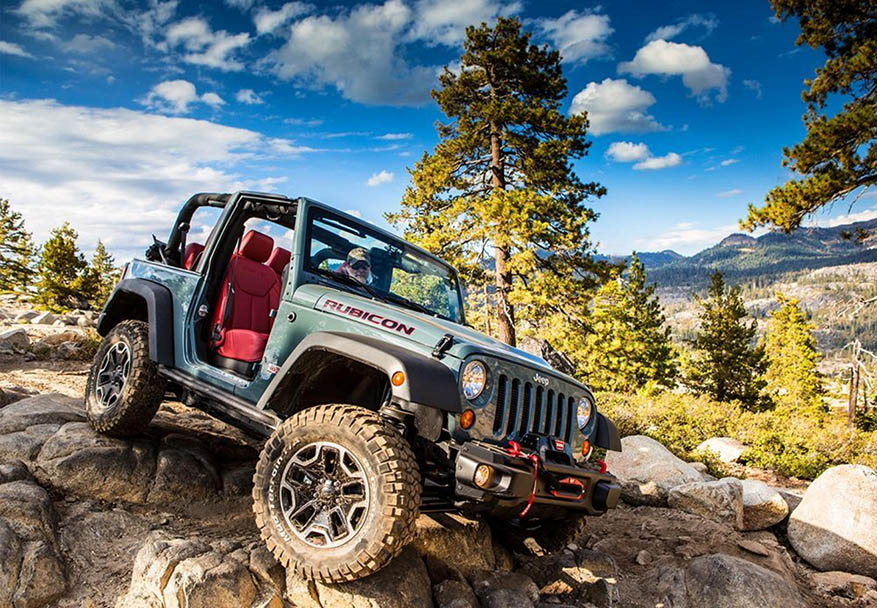
The JK Wrangler replaced the TJ in 2007, with styling that was more of an evolution than a dramatic departure. Nonetheless, small differences set the two generations apart. The JK received mild facelifts throughout its run, but consistent differences from the TJ include grille-mounted—rather than fender-mounted—turn signals, fog lights integrated into the bumper and round fender side markers. The JK Wrangler Unlimited trim is also very easy to distinguish from its TJ forbearer, as an extra set of doors was introduced. The brand also removed its inline 4.0L engine in favor of, first, a 3.8L engine, and later a 3.6L for JK vehicles.
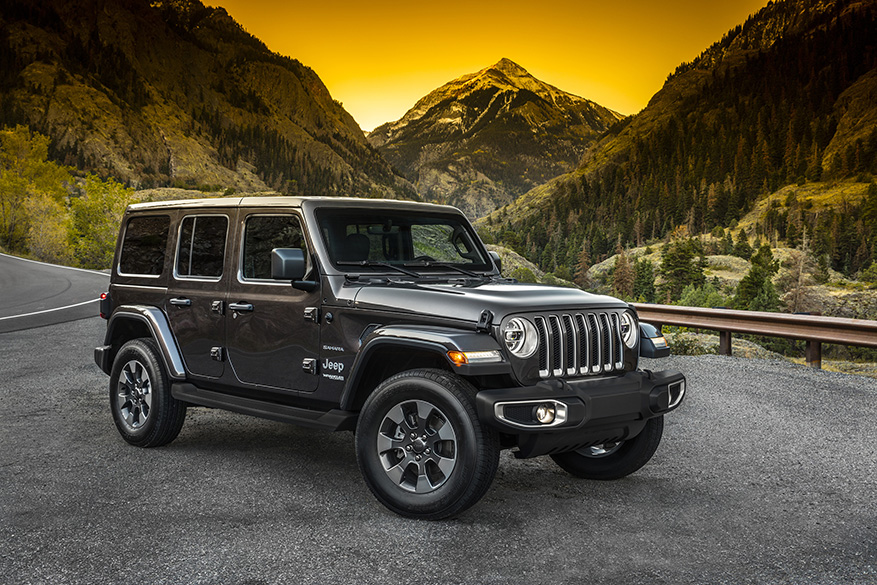
The latest Wrangler, the JL, hit the streets and trails in 2018, boasting a design with details pulled from each preceding generation. Like the CJ look, JL headlights protrude into the first and seventh grille openings; like the YJ, the grille has a defined slant; like the TJ, the turn signals are squared off and fender-mounted, yet now the side marker and blinker are one unit. Lastly, like the JK, the fog lights are integrated into the bumper. The easiest JL giveaway, however, is the location of the Jeep emblem, which for the first time is located on the hood, as well as vent openings right behind the front fenders.
The JL-era also saw the return of a Jeep truck, now called the Gladiator JT. Unlike the Scrambler, Gladiator offers four doors and a greater emphasis on luxury, which is also seen across the entire JL model lineup to meet the demands of an SUV-obsessed market.
Identifying each generation of Jeep in stock form is already a challenge, but a robust Jeep aftermarket complicates the task. All the way back to the original MB, Jeeps have been vehicles begging for customization. Although machine-gun mounts are not available for civilian 4x4s, plenty of other modifications—from functional off-road bumpers and lift kits to aesthetic mods like wheels and LED lighting—are available in a robust aftermarket industry. Many Jeep enthusiasts enjoy modifying their Jeep to perform better off-road or to look better on the street. For this reason, looking at a modified Jeep’s grille, headlight shape and turn signal location provides useful clues to identify its model generation.
The Jeep is one of the few vehicles to have truly stood the test of time. It’s a piece of Americana, reborn with a certain familiarity in every generation. Jeep’s honest and functional styling is a staple of the brand, synonymous with adventure and exploration. Even so, changes throughout the years have allowed the Jeep to enter the modern era with originality. As American as you can get, the Jeep is freedom with four-wheel drive.












